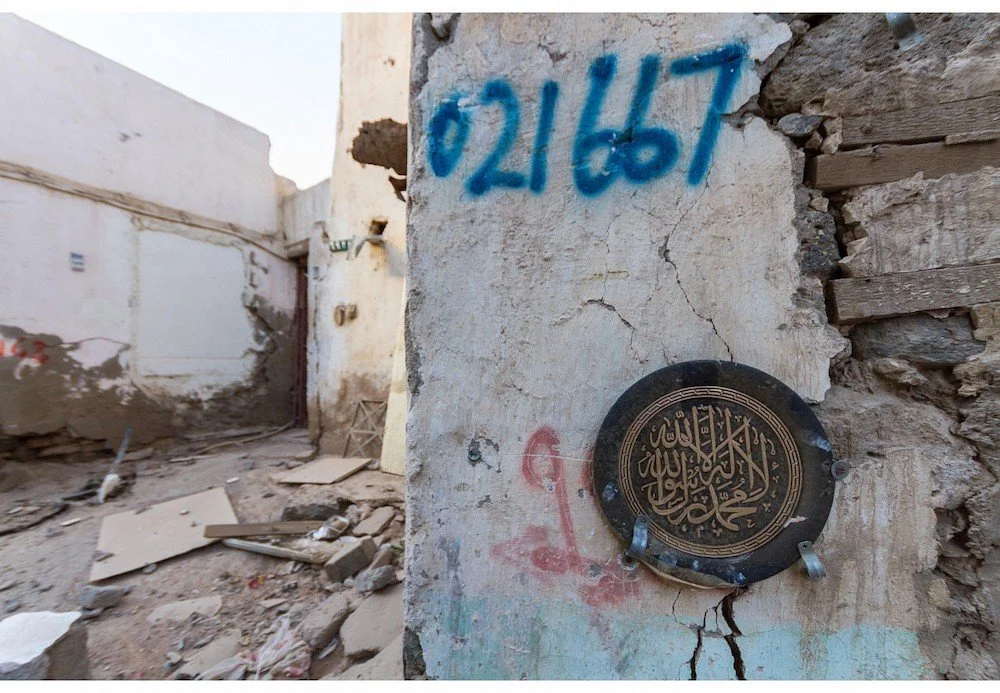Moath Alofi: Doors of Barlik
Salvaging the present for the future.
Moath Alofi, from the series Doors of Barlik (2016). Archival pigment print. Courtesy of the artist and Athr Gallery.
With text by Sandra Williams, art historian and curator.
After several years spent living abroad, Saudi photographer Moath Alofi returned to find his hometown of Medina vastly transformed by development projects, with historic neighborhoods razed to make way for new construction and the expansion of the Mosque of the Prophet. In recent years, Medina and nearby Mekkah have undergone a rapid transformation fueled by the global Muslim community’s growth and the expansion of air travel, which have brought ever more pilgrims to the two holy cities. Capitalizing on the economic boom of tourism, the government has constructed new roads, parking lots, hotels and shopping malls to accommodate the surge of pilgrims. This development has led to the destruction of historic buildings and neighborhoods, which has drawn the attention of critics and artists, including Alofi and Ahmed Mater. Fearing the loss of the city’s historic identity, Alofi took to Medina’s streets to photograph the changes.
Harbored within his exquisitely composed photographs are concerns for the rapid and unchecked development of Medina and the abandonment of the historic city’s past. His series Doors of Barlik, which addresses the destruction of the city’s historic neighborhoods and communities, is perhaps the best example of this. In Doors of Barlik, Alofi photographed the neighborhoods slated to be demolished and created “types” from the demolition process: the ill-fated houses with their blue-spray painted numbers (used for residents to receive financial compensation from the government), the machines that tear them down, and the mosques that linger in deserted neighborhoods. The absence of people in Alofi’s landscapes is startling and amplified by the homes and detritus that are mementos of the once-thriving communities.
For Alofi, Medina’s evolving urban landscape and its environs are a space for salvaging the remnants of history and reflecting on the city’s contemporary trajectory. Alofi stated that he is creating an archive for future generations, where they might see what came before the malls and roads. His photographs then are an act of preservation, recording what is soon to be lost while simultaneously shedding light on the destructive effects of commercial development in the hope of altering present policies.


